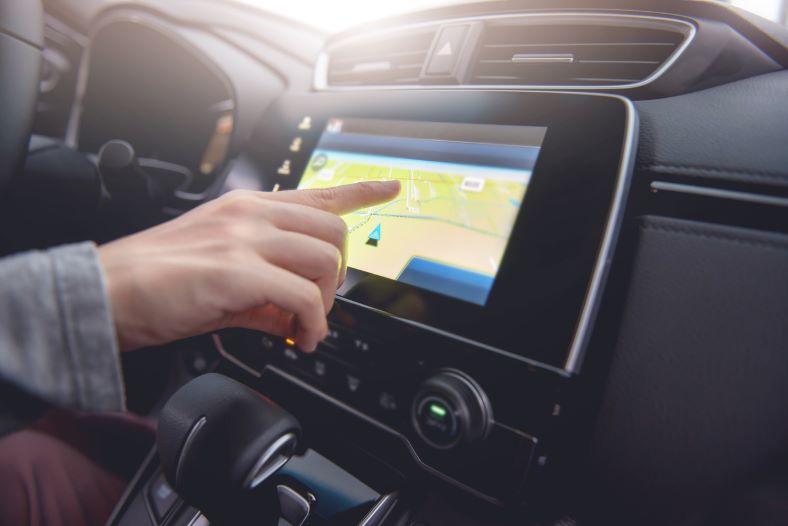
With road safety becoming a top priority, understanding advanced car security features like the KARR Security System is essential for every driver. Whether you’re an auto enthusiast, a parent-focused on family safety, a tech-savvy driver, or someone who wants to stay updated on the latest in vehicle safety technology, this guide is tailored for you.
We’ll explore key safety features and benefits and how they cater to various driving needs. Armed with these insights, you’ll be better equipped to choose your vehicle’s safety features.
Essential Safety Features That Every Car Needs
Airbags and Their Life-Saving Impact
Airbags have been a staple in vehicle safety for decades, offering vital protection during collisions. These inflatable cushions automatically deploy in a crash, reducing the risk of injury by providing a buffer between passengers and the car’s interior. Front airbags are required in all passenger vehicles in the U.S., but side airbags, though not mandatory, are commonly included.
The technology behind airbags has evolved, incorporating sensors that determine the force and direction of an impact, ensuring optimal protection. Including side airbags further enhances safety by protecting passengers’ heads and torsos during side-impact crashes. This essential feature highlights the critical role of airbags in modern vehicle safety.
Anti-lock brakes for Enhanced Control
Anti-lock braking systems (ABS) have revolutionised driving by preventing wheel lockup during hard braking. This system uses sensors to monitor wheel speed, automatically adjusting brake pressure to maintain traction and prevent skidding. ABS is especially beneficial in emergencies where drivers must stop quickly without losing control.
Integrating ABS with electronic stability and traction control systems has further improved vehicle safety. These technologies work together to ensure drivers maintain control even in challenging conditions such as wet or icy roads. ABS remains a foundational element in any vehicle’s safety arsenal, providing confidence and stability when needed.
Backup Cameras for Improved Visibility
Backup cameras have become a standard feature in newer cars, offering drivers a clear view of what’s behind them when reversing. This feature significantly reduces the risk of accidents in parking lots and driveways by alerting drivers to obstacles they might not see otherwise. Backup cameras are especially useful in spotting small children and low-lying objects, contributing to overall vehicle safety.
The convenience of backup cameras lies in their ease of use. Activated when the car is in reverse, they provide a real-time video feed displayed on the vehicle’s dashboard screen. This technology is a testament to how advancements in vehicle safety can make everyday driving safer and more convenient.
Tailoring Safety Features to Different Drivers
Parents’ Best Friends in Car Safety
For parents, safety is paramount. Features like LATCH (Lower Anchors and Tethers for Children) make securing child seats easier and more reliable. LATCH systems, mandatory in all passenger cars since 2002, provide anchor points that simplify the installation of child safety seats, ensuring they remain securely in place.
In addition to LATCH, other features like rear-seat reminders and automatic emergency braking add layers of protection. These systems help prevent accidents and ensure that the youngest passengers are as safe as possible. For parents, investing in these safety features offers peace of mind while transporting precious cargo.
Tech Enthusiasts’ Dream Features
Tech-savvy drivers often seek the latest innovations in vehicle safety technology. Features like adaptive cruise control and lane-centering assistance offer a glimpse into the future of driving. Adaptive cruise control maintains a set speed while adjusting to traffic conditions, providing a seamless driving experience.
Lane-centring assistance takes this further by using cameras and sensors to keep the car centred in its lane, even on winding roads. These advanced features highlight the blend of convenience and safety, appealing to those eager to embrace cutting-edge technology in their driving experience. For those interested in the latest automotive innovations, WorldWideScienceStories.com Innovative Tech Ventures provides insights into how such technologies are reshaping the future of transportation.
Safety Assurance for Elderly Drivers
For elderly drivers, safety features that enhance awareness and reduce physical effort can be invaluable. Blind-spot monitoring and lane-departure warnings offer added layers of protection by alerting drivers to potential hazards that might be difficult to see.
These technologies provide reassurance and confidence, enabling older drivers to enjoy their independence while staying safe on the road. By focusing on enhancing visibility and awareness, these features cater to the specific needs of elderly drivers, making driving a safer experience.
Choosing the Right Safety Features for You
Evaluating Your Driving Needs
When selecting safety features, it’s essential to consider your specific driving needs. Think about the types of roads you frequent, the weather conditions you often encounter, and the passengers you typically transport. Understanding these factors will help you prioritise the best features to enhance your safety.
For city dwellers, features like forward-collision warnings and automatic emergency braking might be more valuable due to frequent stop-and-go traffic. Conversely, those who drive long distances may prioritize adaptive cruise control and lanemaximisekeeping assistance for added comfort and safety during highway driving.
Balancing Cost and Benefit
While safety is a top priority, it’s important to find a balance between cost and benefit. Advanced safety features can increase a vehicle’s price, so assessing which features provide the most value based on your driving habits and budget is crucial.
Conducting a cost-benefit analysis can help guide your decisions. Consider the potential savings from accident prevention and reduced insurance premiums when evaluating the investment in safety technology. Prioritising features that align with your needs and offer significant safety benefits can ensure you maximise your investment.
Making Informed Decisions
To make informed decisions about safety features, do your research and consult trusted sources. Vehicle safety ratings from organisations like the National Highway Traffic Safety Administration (NHTSA) and the Insurance Institute for Highway Safety (IIHS) provide valuable insights into a car’s safety performance.
Reading reviews and seeking recommendations from other drivers can also offer practical perspectives on the effectiveness of various features. By taking the time to gather information, you can confidently choose the safety features that will best protect you and your loved ones.
The Future of Car Safety Features
Emerging Technologies on the Horizon
The future of car safety is promising, with emerging technologies set to redefine how we drive. Innovations like vehicle-to-vehicle communication and autonomous driving systems hold the potential to dramatically reduce accidents and improve road safety.
Vehicle-to-vehicle communication lets cars exchange information about speed, location, and road conditions in real time, enabling them to anticipate and respond to potential hazards. This technology could pave the way for smarter, more connected transportation networks that enhance safety for everyone on the road.
Challenges and Opportunities
While the future of car safety is exciting, it comes with its own set of challenges and opportunities. The integration of complex technologies requires careful consideration of cybersecurity and data privacy. Ensuring that these systems are secure and reliable is paramount to their success.
The transition to fully autonomous vehicles also presents regulatory and ethical challenges. Determining how these vehicles will interact with human drivers and pedestrians in diverse environments will be a critical factor in their widespread adoption. However, overcoming these challenges presents an opportunity to create safer, more efficient roads for all.
Preparing for the Future
As we look toward the future, it’s important to stay informed about the latest advancements in vehicle safety technology. Manufacturers continue to innovate, and staying updated on these developments can help you make informed decisions when purchasing a new vehicle.
Consider attending automotive expos and industry events where new technologies are showcased. Engaging with online communities of car enthusiasts and experts can also provide valuable insights into emerging trends. By staying informed, you can be well-prepared for the exciting changes ahead in car safety.
Real-Life Impact of Safety Features
Stories of Lives Saved
Real stories of how safety features have saved lives highlight the importance of investing in vehicle safety technology. From automatic emergency braking to stopping a car before a collision to blind-spot monitoring preventing an accident on the highway, these features have tangible impacts on driver and passenger safety.
These stories underscore the value of safety features in everyday driving scenarios and demonstrate their potential to prevent accidents and save lives. Hearing firsthand accounts of how these technologies have made a difference reinforces their significance and encourages drivers to prioritise safety.
Case Studies from Industry Leaders
Case studies from car manufacturers and safety organisations offer insights into the effectiveness of various safety features. These studies provide concrete examples of how advanced technologies have reduced crash rates and enhanced overall safety on the roads.
By examining these case studies, drivers can gain a deeper understanding of which features offer the most significant benefits. Insights from industry leaders help build trust in the capabilities of safety technologies and encourage their adoption across different types of vehicles.
Learning from Real-World Examples
Learning from real-world examples allows drivers to see the practical impact of safety features in action. Whether it’s a parent sharing how LATCH made securing a child seat effortless or a tech enthusiast marvelling at the convenience of adaptive cruise control, these examples bring the benefits of safety features to life.
By exploring these real-world examples, drivers can visualise how safety features fit into their daily routines and driving experiences. This understanding empowers them to decide which features are most valuable for their needs.
Conclusion
In conclusion, understanding car safety features and their importance is vital for every driver. From essential features like airbags and anti-lock brakes to advanced technologies like adaptive cruise control and blind-spot monitoring, these innovations enhance safety and confidence on the road.
Staying informed about emerging safety technologies, evaluating driving needs, and learning from real-world examples empower drivers to make informed choices about the safety features that best suit their vehicles. By prioritising safety and sharing this valuable information with others, we contribute to creating safer roadmarvellingne.


